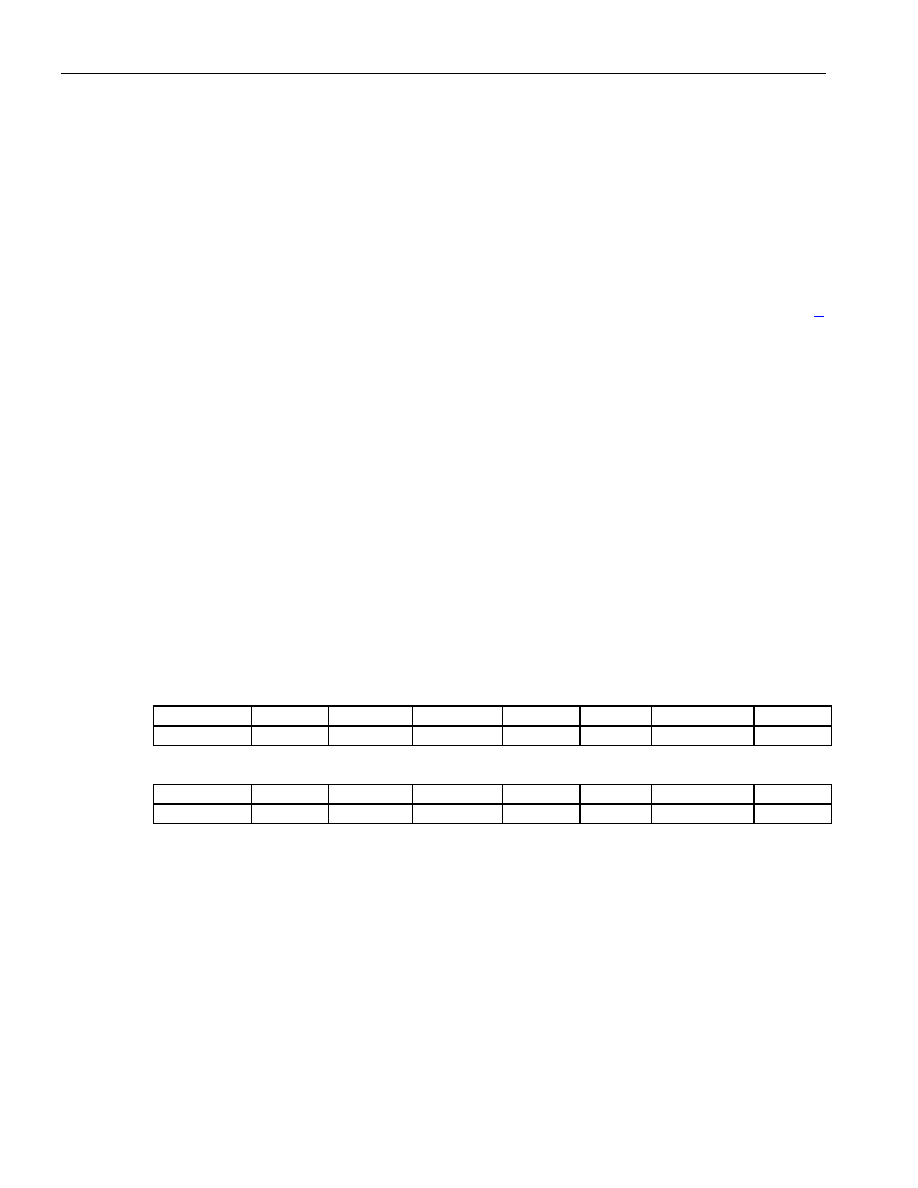- 您現(xiàn)在的位置:買賣IC網(wǎng) > PDF目錄1915 > DS31256+ (Maxim Integrated Products)IC CTRLR HDLC 256-CHANNEL 256BGA PDF資料下載
參數(shù)資料
| 型號(hào): | DS31256+ |
| 廠商: | Maxim Integrated Products |
| 文件頁數(shù): | 28/183頁 |
| 文件大小: | 0K |
| 描述: | IC CTRLR HDLC 256-CHANNEL 256BGA |
| 產(chǎn)品培訓(xùn)模塊: | Lead (SnPb) Finish for COTS Obsolescence Mitigation Program |
| 標(biāo)準(zhǔn)包裝: | 40 |
| 控制器類型: | HDLC 控制器 |
| 接口: | 串行 |
| 電源電壓: | 3 V ~ 3.6 V |
| 電流 - 電源: | 500mA |
| 工作溫度: | 0°C ~ 70°C |
| 安裝類型: | 表面貼裝 |
| 封裝/外殼: | 256-BBGA |
| 供應(yīng)商設(shè)備封裝: | 256-BGA(27x27) |
| 包裝: | 管件 |
第1頁第2頁第3頁第4頁第5頁第6頁第7頁第8頁第9頁第10頁第11頁第12頁第13頁第14頁第15頁第16頁第17頁第18頁第19頁第20頁第21頁第22頁第23頁第24頁第25頁第26頁第27頁當(dāng)前第28頁第29頁第30頁第31頁第32頁第33頁第34頁第35頁第36頁第37頁第38頁第39頁第40頁第41頁第42頁第43頁第44頁第45頁第46頁第47頁第48頁第49頁第50頁第51頁第52頁第53頁第54頁第55頁第56頁第57頁第58頁第59頁第60頁第61頁第62頁第63頁第64頁第65頁第66頁第67頁第68頁第69頁第70頁第71頁第72頁第73頁第74頁第75頁第76頁第77頁第78頁第79頁第80頁第81頁第82頁第83頁第84頁第85頁第86頁第87頁第88頁第89頁第90頁第91頁第92頁第93頁第94頁第95頁第96頁第97頁第98頁第99頁第100頁第101頁第102頁第103頁第104頁第105頁第106頁第107頁第108頁第109頁第110頁第111頁第112頁第113頁第114頁第115頁第116頁第117頁第118頁第119頁第120頁第121頁第122頁第123頁第124頁第125頁第126頁第127頁第128頁第129頁第130頁第131頁第132頁第133頁第134頁第135頁第136頁第137頁第138頁第139頁第140頁第141頁第142頁第143頁第144頁第145頁第146頁第147頁第148頁第149頁第150頁第151頁第152頁第153頁第154頁第155頁第156頁第157頁第158頁第159頁第160頁第161頁第162頁第163頁第164頁第165頁第166頁第167頁第168頁第169頁第170頁第171頁第172頁第173頁第174頁第175頁第176頁第177頁第178頁第179頁第180頁第181頁第182頁第183頁

DS31256 256-Channel, High-Throughput HDLC Controller
123 of 183
When enabled through the transmit done-queue FIFO-enable (TDQFE) bit, the done-queue FIFO does
not write to the done queue until it reaches the high watermark. When the done-queue FIFO reaches the
high watermark (which is six descriptors), it attempts to empty the done-queue FIFO by burst writing to
the done queue. Before it writes to the done queue, it checks (by examining the transmit done-queue host
read pointer) to ensure the done queue has enough room to empty. If the done queue does not have
enough room, then it only burst writes enough descriptors to keep from overflowing. If the FIFO detects
that there is no room for any descriptors to be written, then it sets the status bit for transmit DMA done-
queue write error (TDQWE) in the SDMA and it does not write to the done queue nor does it increment
the write pointer. In such a scenario, information on transmitted packets is lost and unrecoverable. If the
done-queue FIFO can write descriptors to the done queue, then it burst writes them, increments the write
pointer, and sets the status bit for transmit DMA done-queue write (TDQW) in the SDMA. See Section 5
for more details about status bits.
Done-Queue FIFO Flush Timer
To ensure the done-queue FIFO gets flushed to the done queue on a regular basis, the transmit done-
queue FIFO flush timer (TDQFFT) is used by the DMA to determine the maximum wait time in between
writes. The TDQFFT is a 16-bit programmable counter that is decremented every PCLK divided by 256.
It is only monitored by the DMA when the transmit done-queue FIFO is enabled (TDQFE = 1). For a
33MHz PCLK, the timer is decremented every 7.76
s. For a 25MHz clock, it decrements every 10.24s.
Each time the DMA writes to the done queue it resets the timer to the count placed into it by the host. On
initialization, the host sets a value into the TDQFFT that indicates the maximum time the DMA should
wait in between writes to the done queue. For example, with a PCLK of 33MHz, the range of wait times
is from 7.8
s (RDQFFT = 0001h) to 508ms (RDQFFT = FFFFh). With a PCLK of 25MHz, the wait
times range from 10.2s (RDQFFT = 0001h) to 671ms (RDQFFT = FFFFh).
Register Name:
TDQFFT
Register Description:
Transmit Done-Queue FIFO Flush Timer
Register Address:
0844h
Bit #
7
6
5
4
3
2
1
0
Name
TC7
TC6
TC5
TC4
TC3
TC2
TC1
TC0
Default
0
Bit #
15
14
13
12
11
10
9
8
Name
TC15
TC14
TC13
TC12
TC11
TC10
TC9
TC8
Default
0
Note: Bits that are underlined are read-only; all other bits are read-write.
Bits 0 to 15/Transmit Done-Queue FIFO Flush Timer Control Bits (TC0 to TC15). Please note that on system
reset, the timer is set to 0000h, which is defined as an illegal setting. If the receive done-queue FIFO is to be
activated (TDQFE = 1), the host must first configure the timer to a proper state and then set the TDQFE bit
to 1.
0000h = illegal setting
0001h = timer count resets to 1
FFFFh = timer count resets to 65,536
相關(guān)PDF資料 |
PDF描述 |
|---|---|
| DS3141+ | IC FRAMER DS3/E3 SNGL 144CSBGA |
| DS31412N | IC 12CH DS3/3 FRAMER 349-BGA |
| DS3150TN | IC LIU T3/E3/STS-1 IND 48-TQFP |
| DS3154N+ | IC LIU DS3/E3/STS-1 QD 144CSBGA |
| DS3164+ | IC ATM/PACKET PHY QUAD 400-BGA |
相關(guān)代理商/技術(shù)參數(shù) |
參數(shù)描述 |
|---|---|
| DS31256+ | 功能描述:輸入/輸出控制器接口集成電路 256Ch High Thruput HDLC Cntlr RoHS:否 制造商:Silicon Labs 產(chǎn)品: 輸入/輸出端數(shù)量: 工作電源電壓: 最大工作溫度:+ 85 C 最小工作溫度:- 40 C 安裝風(fēng)格:SMD/SMT 封裝 / 箱體:QFN-64 封裝:Tray |
| DS31256B | 功能描述:輸入/輸出控制器接口集成電路 256Ch High Thruput HDLC Cntlr RoHS:否 制造商:Silicon Labs 產(chǎn)品: 輸入/輸出端數(shù)量: 工作電源電壓: 最大工作溫度:+ 85 C 最小工作溫度:- 40 C 安裝風(fēng)格:SMD/SMT 封裝 / 箱體:QFN-64 封裝:Tray |
| DS31256DK | 功能描述:網(wǎng)絡(luò)開發(fā)工具 RoHS:否 制造商:Rabbit Semiconductor 產(chǎn)品:Development Kits 類型:Ethernet to Wi-Fi Bridges 工具用于評(píng)估:RCM6600W 數(shù)據(jù)速率:20 Mbps, 40 Mbps 接口類型:802.11 b/g, Ethernet 工作電源電壓:3.3 V |
| DS31256-W+ | 制造商:Maxim Integrated Products 功能描述:ENVOY 256 CHANNEL HDLC - WAIVER - Rail/Tube |
| DS312BNC | 制造商:未知廠家 制造商全稱:未知廠家 功能描述:Industrial Control IC |
發(fā)布緊急采購(gòu),3分鐘左右您將得到回復(fù)。